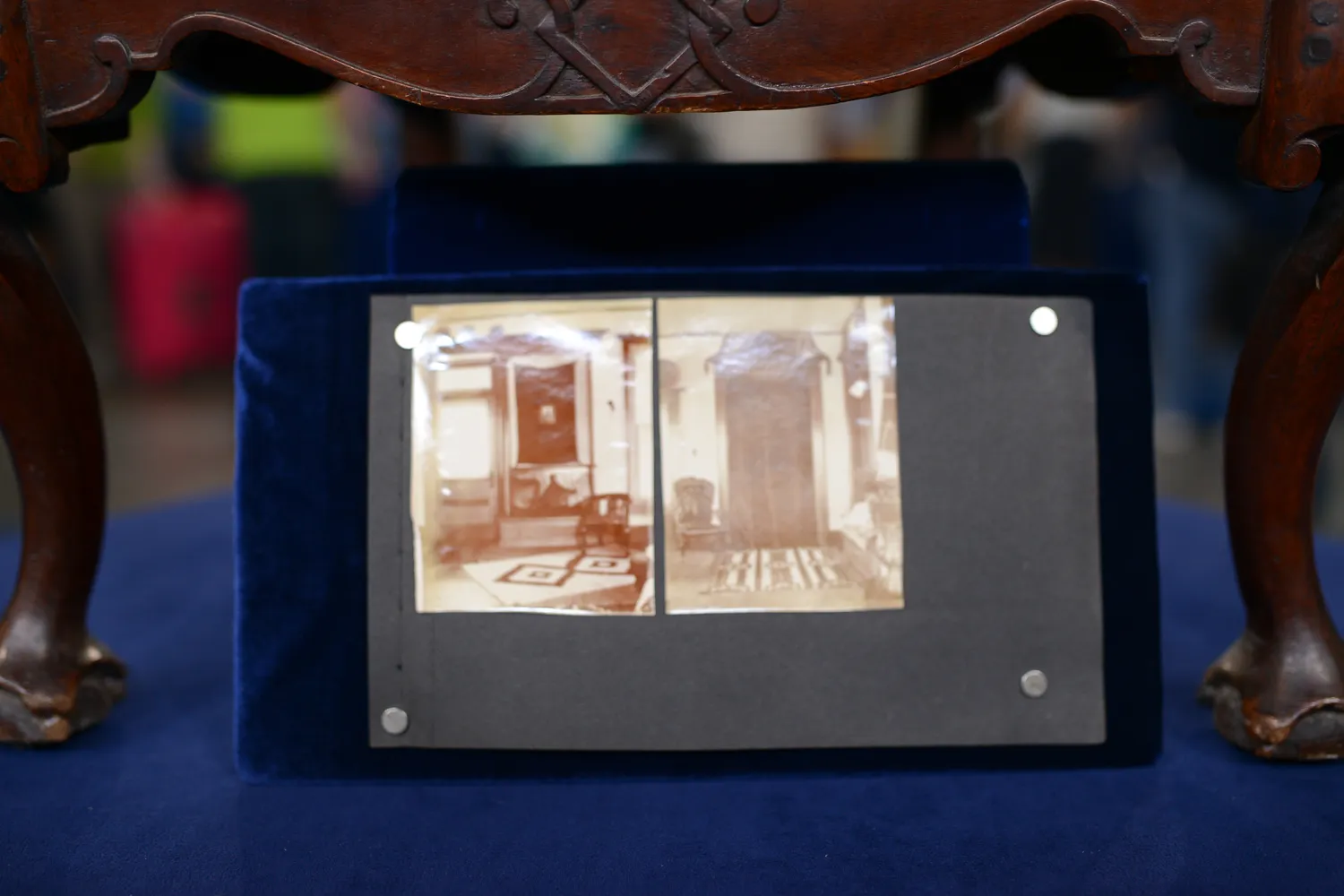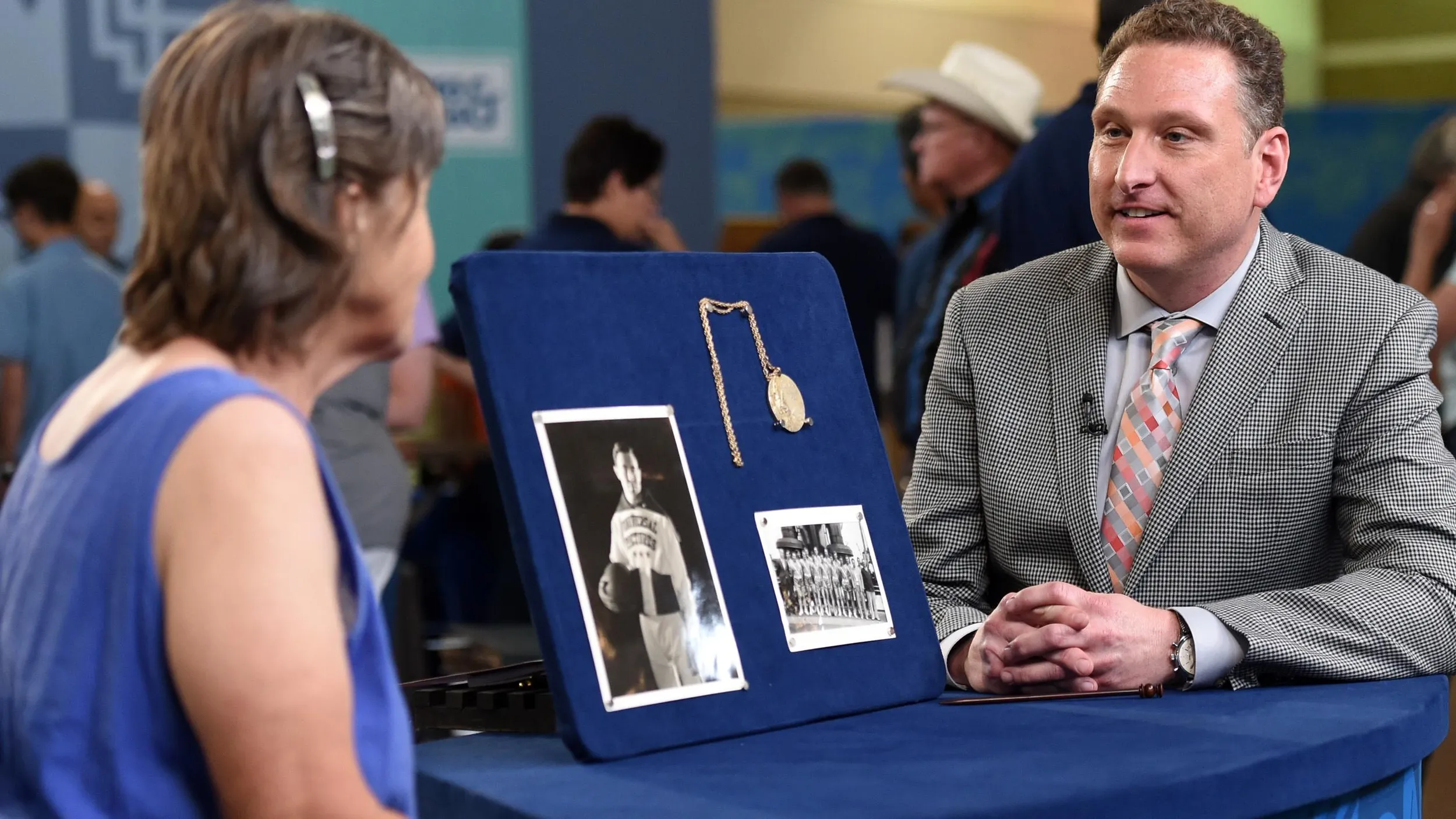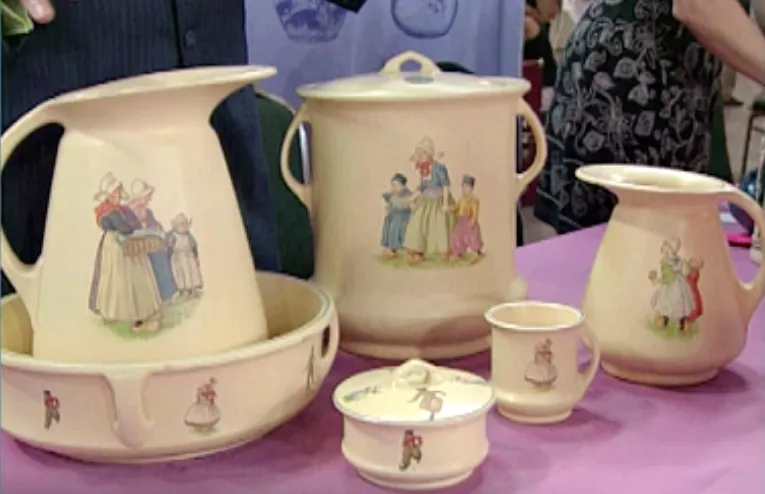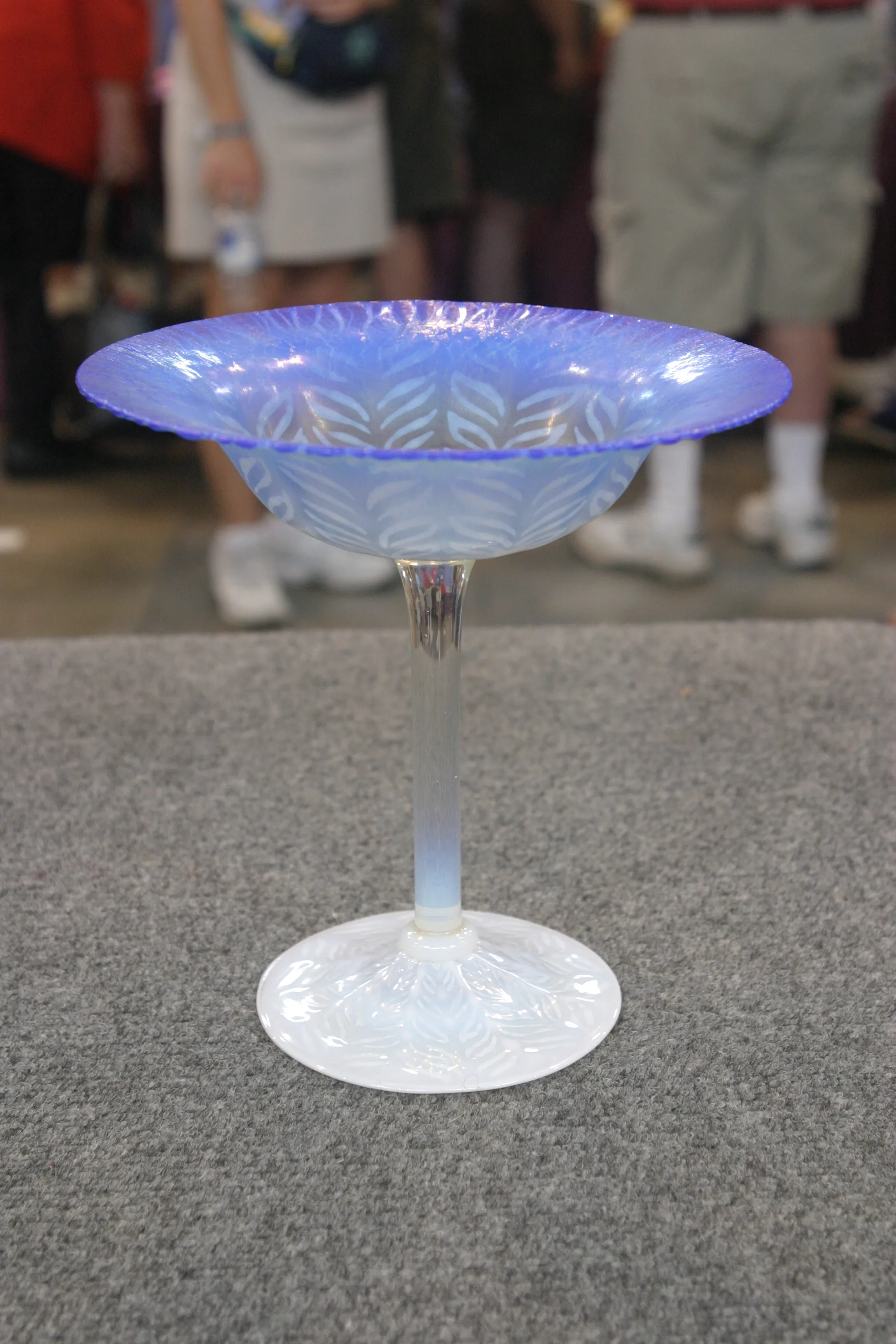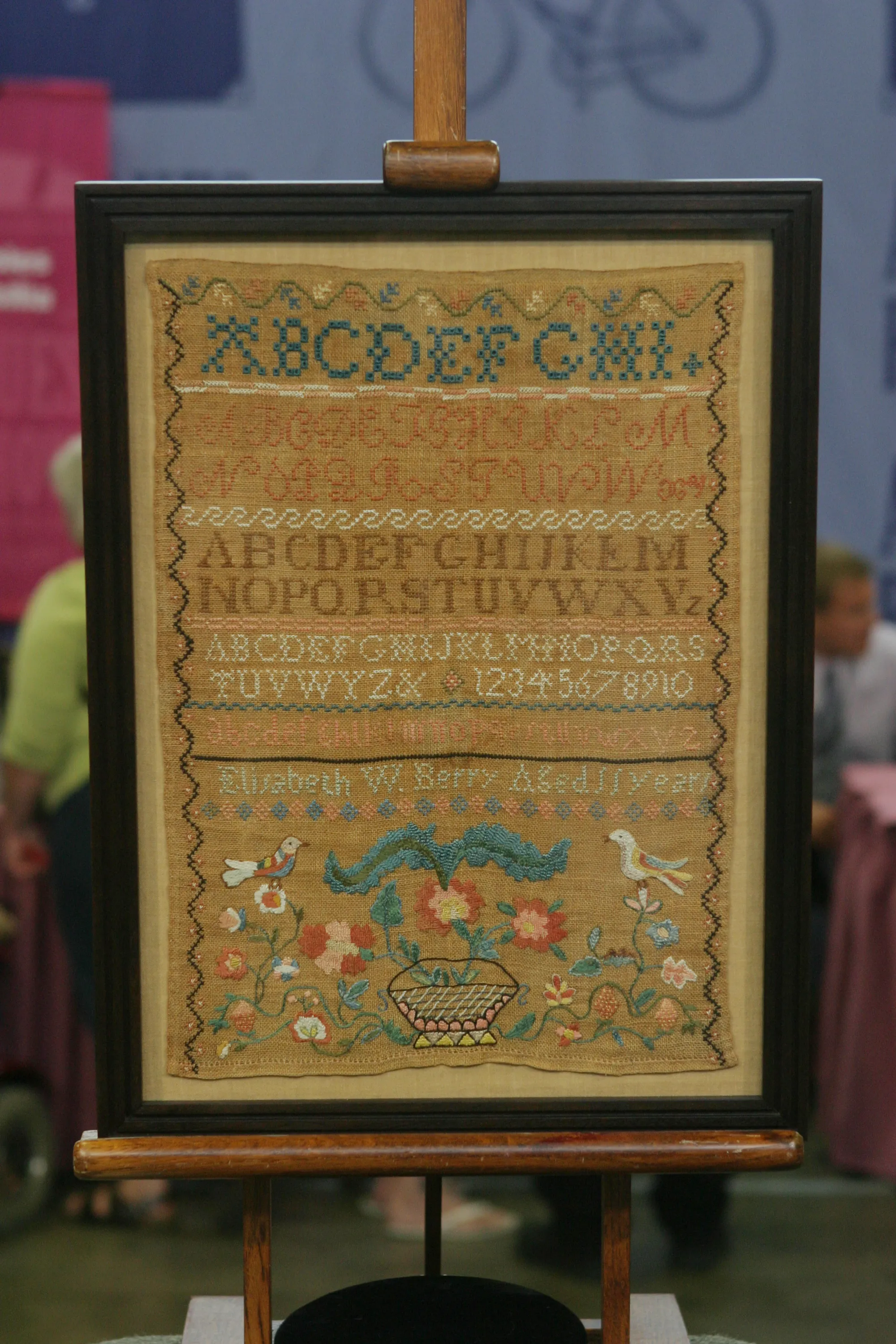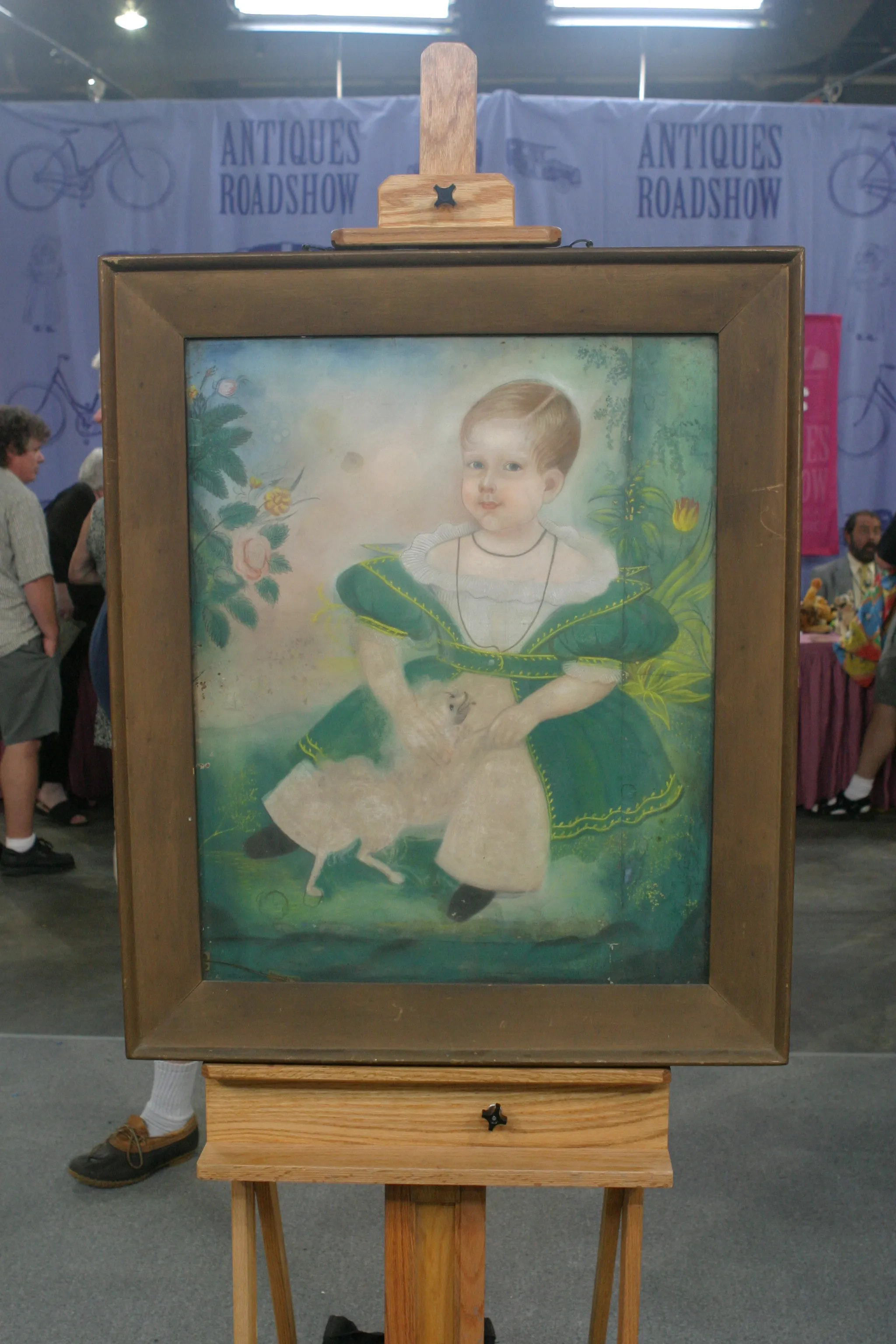GUEST: I brought an old chair that was in my family for centuries.
APPRIASER: So what do you know about it?
GUEST: Well, I know it was in the... 'cause I remember it in the living room when I was a little kid.
APPRAISER: So that's this picture here of it out of an album you brought us. That's the chair there in front of what looks like a very nice Navajo weaving as well. That was taken when?
GUEST: Around 1910.
APPRAISER: Okay, so what do you know about the chair specifically? What's the family lore?
GUEST: Well, you know, I always wondered what this was. I never saw this top on anything. I did a lot of research. I never... I'm not familiar with this.
APPRAISER: You mean the top, the way the arms are flattened?
GUEST: The arms, yeah, I've seen later ones, but not this one. And I saw a similar one on the Roadshow once and it had this splat, but it was a corner chair.
APPRAISER: Okay, we think it's a chair made in the late 18th century on the Iberian peninsula. So Western Europe, southwestern Europe.
GUEST: Oh, really?
APPRAISER: It could be Spanish, it could be Portuguese, it could even be from another Mediterranean country. But it's a great example of European rococo furniture. We love especially the sort of subtlety of craftsmanship in the carving there at the front matched by this rococo splat. This was made in the country somewhere, probably not in the city. The economy of craftsmanship is great. This splat here, while it looks very refined on the front, is actually rather rough-hewn on the back, and I love that economy of craftsmanship. There's also a wonderful example of hand-tooling on the inside of this curved front seat rail, where you can see these lovely chisel marks that once again speaks to somebody who didn't care what the chair looked like on the inside, just cared what it looked like from the outside. That's a very sort of a country craftsman thing to do. It has a lot of hallmarks of rococo craftsmanship-- again, the pierced splat, these cabriole front legs ending in ball-and-claw feet.
GUEST: So they're not Chippendale?
APPRAISER: It's Chippendale in its style, and sort of done after the knowledge of Chippendale's furniture book, which was published in the mid 18th century. They have lost a little bit of height. You can see that the talons don't quite finish. I love the swoop of this arm here, I love the way that this is sort of stepped up and curved to the top. The cabinetmaker really had a great sense of what made a chair look good. It's a wonderfully constructed chair. This chair is made of mahogany or some other exotic hardwood. It could be rosewood. If it is rosewood, to sell it, you would need to have the appropriate export paperwork in order to sell it overseas. Rosewood is a wood that they control the sale of very closely. Based on the fact that it is an 18th-century chair with great craftsmanship, in an auction, we'd probably put a value at about $1,000 to $1,500.
GUEST: Really? Okay.

